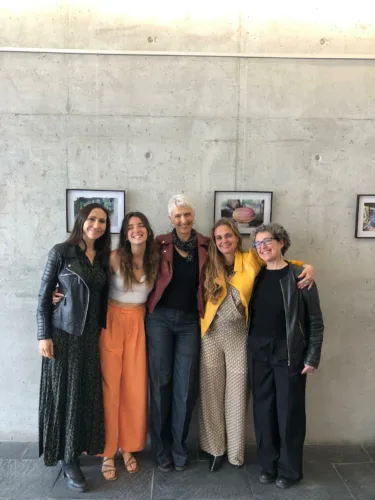The Bribri are one of the most underserved indigenous communities in Costa Rica. They reside in the canton of Talamanca, one of the regions with the lowest Human Development Index in Costa Rica, according to the 2023 Cantonal Human Development Index report by the University of Costa Rica and the Development Research and Observation Center. Tourism is viewed as a valuable opportunity to alleviate poverty by fostering economic growth within the community.
The research project, “Enhancing the Tourism Product of the Bribri Indigenous Community (Talamanca, Costa Rica) by Promoting Its Intangible Cultural Heritage”, is driven by participatory processes aimed at empowering the local population.. As a result of this project, the documentary El viaje de Tsirú (The Journey of Tsirú), was released, where the leaders of local tourism initiatives share their worldview and highlight the cultural significance of cocoa (tsirú in the Bribri language).
The project brought together research staff from Campus Gandia of the Universitat Politècnica de València (UPV)—professors Nadia Alonso, Eva Mestre, Maryland Morant (principal investigator), Cristina Navarro, and graduate Ana Gausach—and the Costa Rican Institute of Technology (ITCR). This collaboration included the Bribri indigenous community, the Association of Bribri Indigenous Tourist Guides of Talamanca (AGITUBRIT), and the Federation of Bribri Women Defending.

The project centers on the Bribri people of Talamanca, whose matrilineal social structure is a key feature. It delves into the symbolic significance of cocoa, its role in agricultural production, and its potential as a cornerstone of indigenous tourism.

The project has been funded by the ADSIDEO program of the UPV Development Cooperation Center, which targets Professors and Researchers.
Presentation of the documentary “The Journey of Tsirú” at Campus Gandia
The documentary The Journey of Tsirú was presented at Campus Gandia by Professor Maryland Morant, the principal investigator of the project “Enhancing the Tourism Product of the Bribri Indigenous Community (Talamanca, Costa Rica) by Promoting Its Intangible Cultural Heritage,” alongside Llanos Gómez, the director of the UPV Development Cooperation Center.

A video that illustrates—and advocates for—the possibility of alternative ways of living and coexisting with our environment, emphasizing that these approaches are under threat and must be prioritized for preservation. Empowering voices and minimizing external interpretations.
The documentary offers an intimate glimpse into the Bribri community in Talamanca, located in Costa Rica’s South Caribbean region. An example of intangible cultural heritage that reveals not only an indigenous perspective on the Earth but also challenges us to reflect on our own ways of life, their foundations, their impacts, and our relationship with the world around us. The Bribri community is in the early stages of developing responsible tourism focused on indigenous culture. This video was produced by the local tourism enterprise they are launching, with support from the research team.
Following the screening of the documentary, a roundtable discussion was held featuring the other researchers involved in the project. The session concluded with a visit to the photography exhibition in the exhibition hall of the university campus.
More information:
Arias-Hidalgo, D.; Morant González, M. (2020). Patrimonio cultural inmaterial indígena: análisis de las potencialidades turísticas de los simbolismos del cacao del pueblo bribri (Talamanca, Costa Rica). Cuadernos de Turismo, nº 46, (2020); pp. 505-530. eISSN: 1989-4635. DOI: https://doi.org/10.6018/turismo.451941
Alonso-López, N.; Morant González, M.; Navarro Laboulais, C. (2021). Design of a tourist communication plan that shows the matrilineal cultural heritage of the Bribri people (Talamanca, Costa Rica). Trama: Revista de Ciencias Sociales y Humanidades. 10(2):43-66. http://hdl.handle.net/10251/201652
Source: Laida Frasquet, Journalist for the Office of Communications at Campus Gandia. Universitat Politècnica de València

